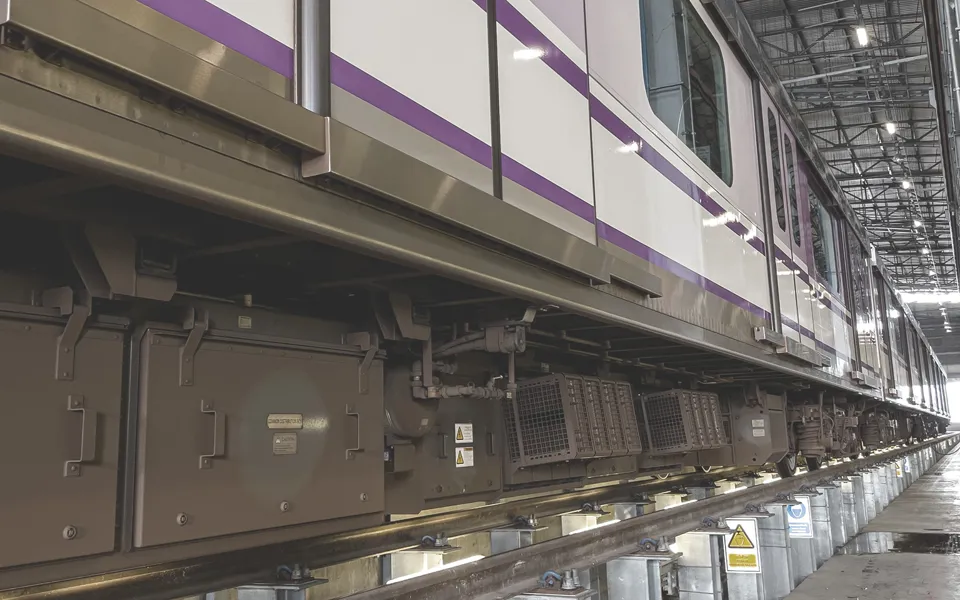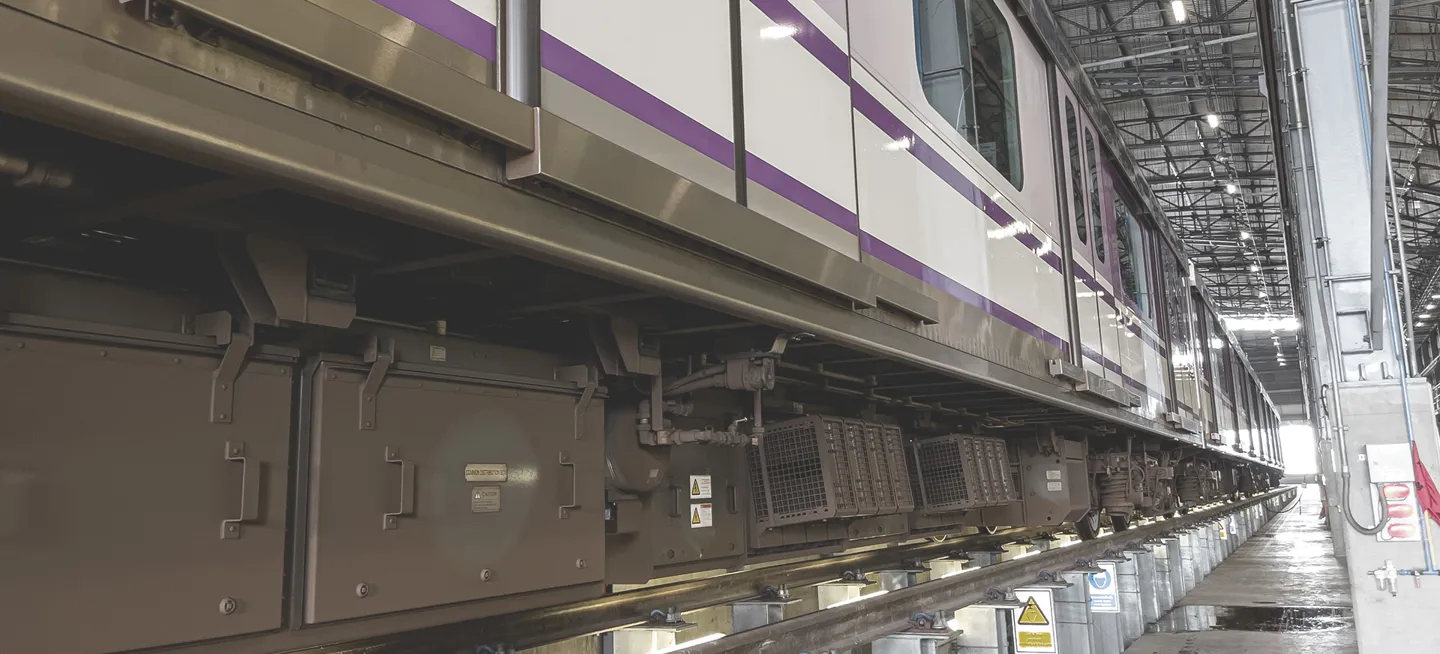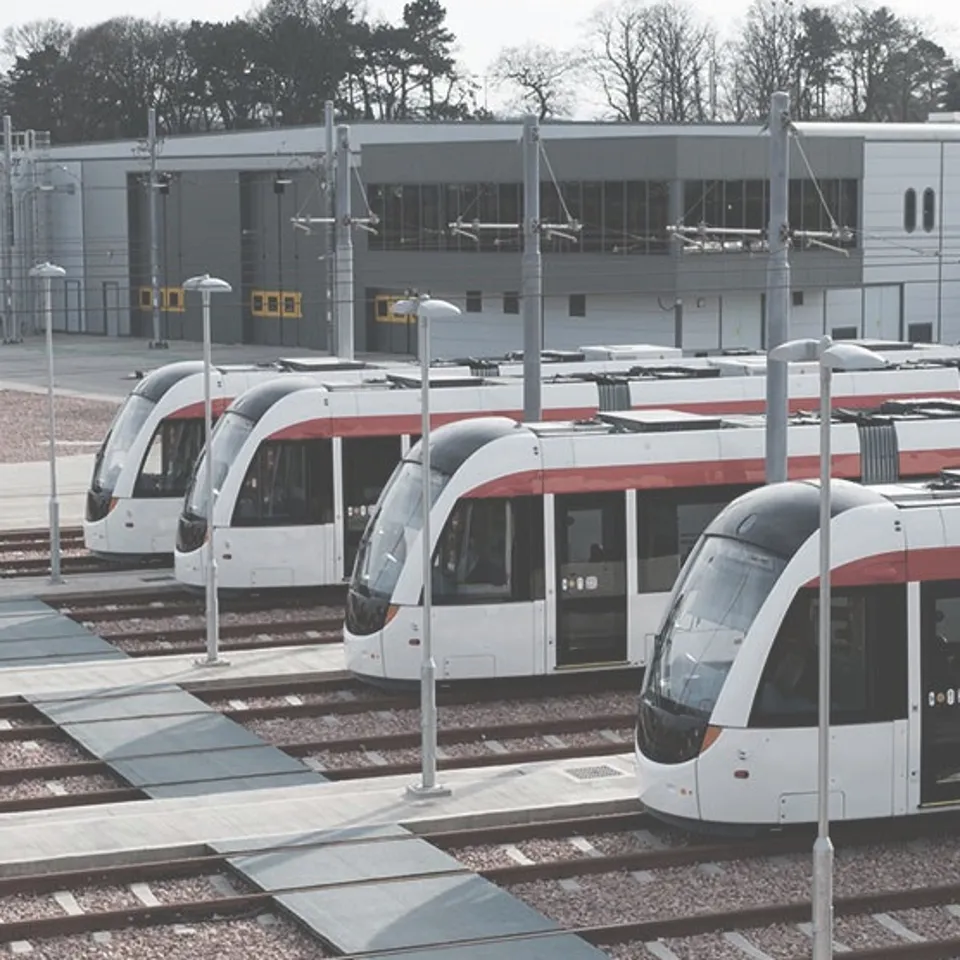Vehicle-track interfaces
Critical to the overall safety and performance of a rail system, we provide specialist services focused squarely on the interfaces between rolling stock and infrastructure.

We have a global network of rail infrastructure specialists who conduct investigations, assessments and vehicle-interface tests across mainline, metro and light rail networks.
Techniques used by our teams include multi-body vehicle dynamics simulations, finite element analysis, predictive modelling, aerodynamics, noise and vibration assessments, soil dynamics adhesion and EMC studies.
Our engineers have extensive backgrounds in the fundamental principles of railway vehicle-track interaction, contributing to various national and international committees, research programmes and working groups.
They will ensure your projects have access to the latest techniques, research and industry best practice, and provide your teams with all the resources and advice required to deliver their objectives.
Our services and capabilities
The wheel-rail interface is of crucial interest for operators, fleet owners and infrastructure managers, and essential for overall safety performance. Optimising wheel-rail interaction can also help reduce wear and tear of assets and therefore help to control maintenance costs.
We provide support through:
- Wheel-rail contact analysis
- Wheel and rail profile measurement and optimisation
- Equivalent conicity, stability analysis
- Wheel-rail conditioning
- Wear Prediction Modelling
- RCF Damage Prediction Modelling, mitigation and maintenance planning.
Smart monitoring of track quality will contribute towards improved safety performance, availability and ride comfort, while also reducing maintenance costs for infrastructure managers.
Proprietary technologies from Ricardo, such as PUPIL, a track geometry assessment tool, and Inframon, are regularly used to collate real-time condition data that underpin year-round asset management strategies.
- Assessment of track geometry measurement data
- Design verification of new track or switch geometry
- Assessment of track geometry (see PUPIL and InfraMon)
- Analysis of rail defects (head checks, squads) causes and solutions
- Development of switch inspection gauges
- Strength analysis of track constructions (rail mountings)
- New developments in track soil modelling to provide forecasts of track loads and degradation due to vehicle design/axle loads.
Reliable and predictable brake performance is critical for ensuring safe operations whilst optimising infrastructure capacity whilst ensuring safe operation.
Applying extensive knowledge of wheel/rail adhesion, brake technology and regulations, our experts provide a range of specialist support, including:
- Adhesion management (sanders, MTB)
- Design and modifications of brake systems
- TrainBrac calculations according to EN14531
- Brake parameter determination (for ETCS, ATB(-vv) etc)
- Product and vehicle homologation or homologation support
- Brake performance tests by internal EN17025 test institute
- Risk analysis and maintenance optimisation
Vehicle dynamics play a key role in day-to-day operational safety, and also have a significant influence on ride comfort for passengers.
Our experts offer support on aspects such as running instability, derailment prevention and track damage assesmenets. With our multi body simulation software, Simpack, for example, we can simulate the vehicle-track dynamical interface to check compliance and improve overall performance.
Example support we can provide:
- Assessment of vehicle-track interface issues (on site inspection, design verification, testing, simulation).
- Simpack Vehicle Dynamical simulations (ride comfort, stability, derailment, track loads).
- Virtual rolling stock testing (assessment running behaviour according to EN14363:2016).
- Running comfort assessment.
- Side wind analysis.
- CrossCheck – an assessment tool for small diameter wheels in crossings.
- Push-pull train dynamics.
Higher traffic levels and heavier axle loads can subject tracks to increased degradation, with mounting soil pressures that can lead to permanent deformation and instability of embankments.
Our experts have developed sophisticated simulation models to help determine the impact of changes in traffic and weights on the integrity of the track foundation. Previous assignments include:
- Simulation of moving trains and determination of soil pressures.
- Setting up design rules for new or revised track beds.
- Track-load analyses using wayside monitoring data.
- Degradation analyses using measured data.
- Assessment of track-loads and comparison to EN14363.
- Determining the effect of corrective maintenance work on the settlement of the track.
Utilising deep technical knowledge of bogie technologies, we provide specialist expert support ranging from strength and fatigue analyses to testing services:
- Design assessment of bogies and wheelsets
- Procurement and homologation support of wheels, axles, brake discs and brake pads
- Failure and safety analysis of running gear components
- Maintenance optimisation of bogies and wheelsets
- Fatigue and fracture mechanics assessments (fit for use analysis)
- Development of NDT regimes for running gear components
Why choose Ricardo
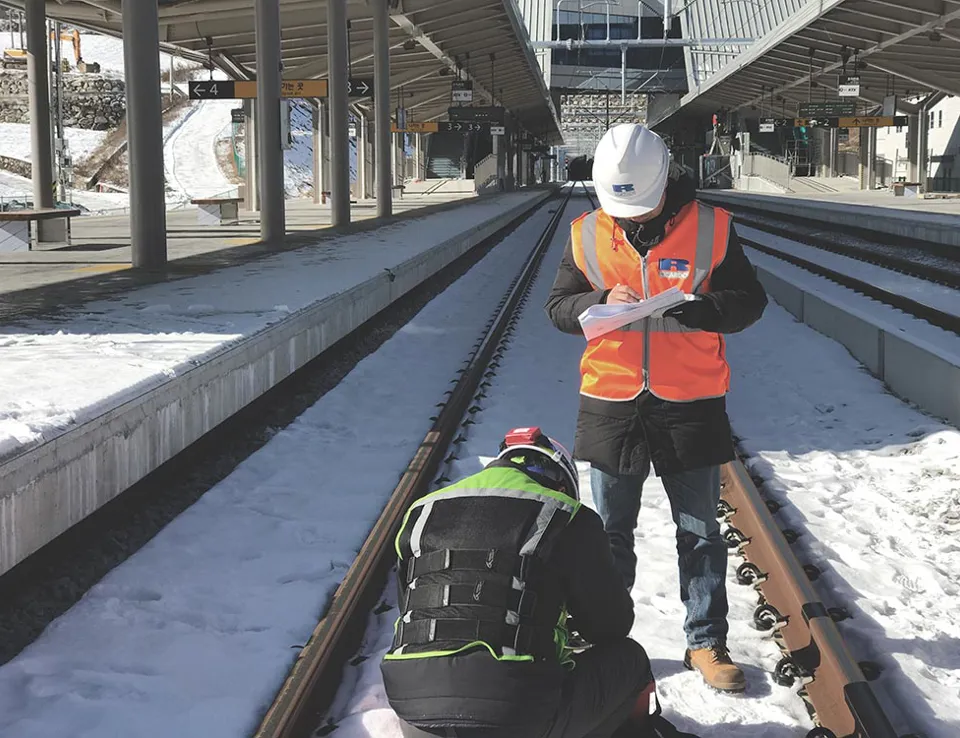
International scope
Our international network of offices and rail technical centres supports the transfer of skills and experience from one region of the world to the next.
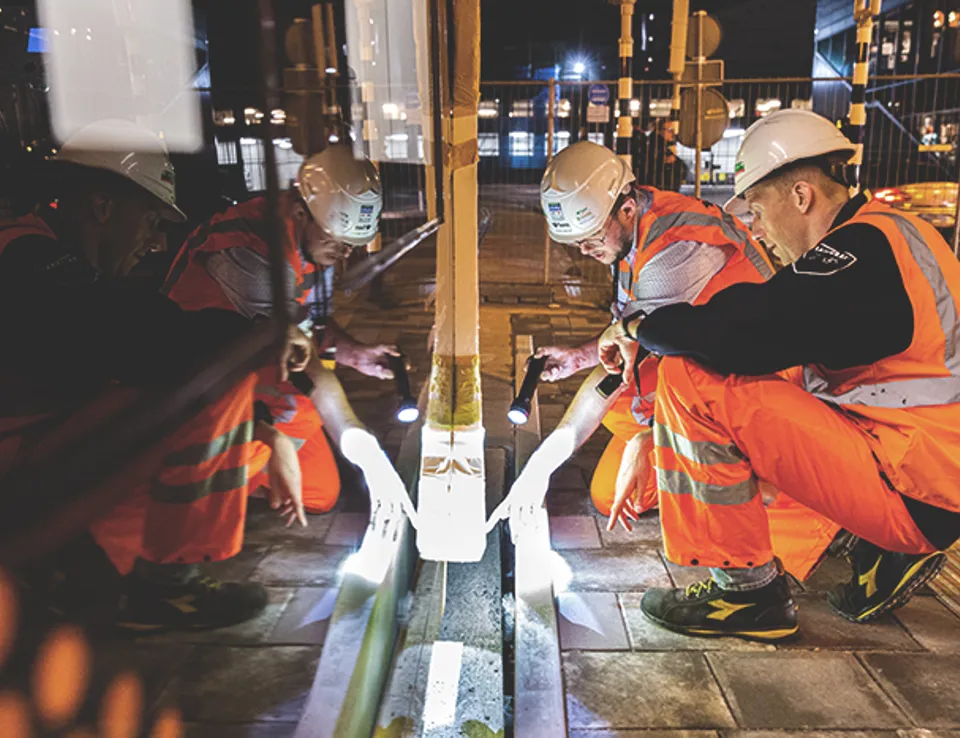
Whole-system mindset
We will help your teams apply systematic processes so that your engineering projects deliver a positive contribution to the wider rail system.
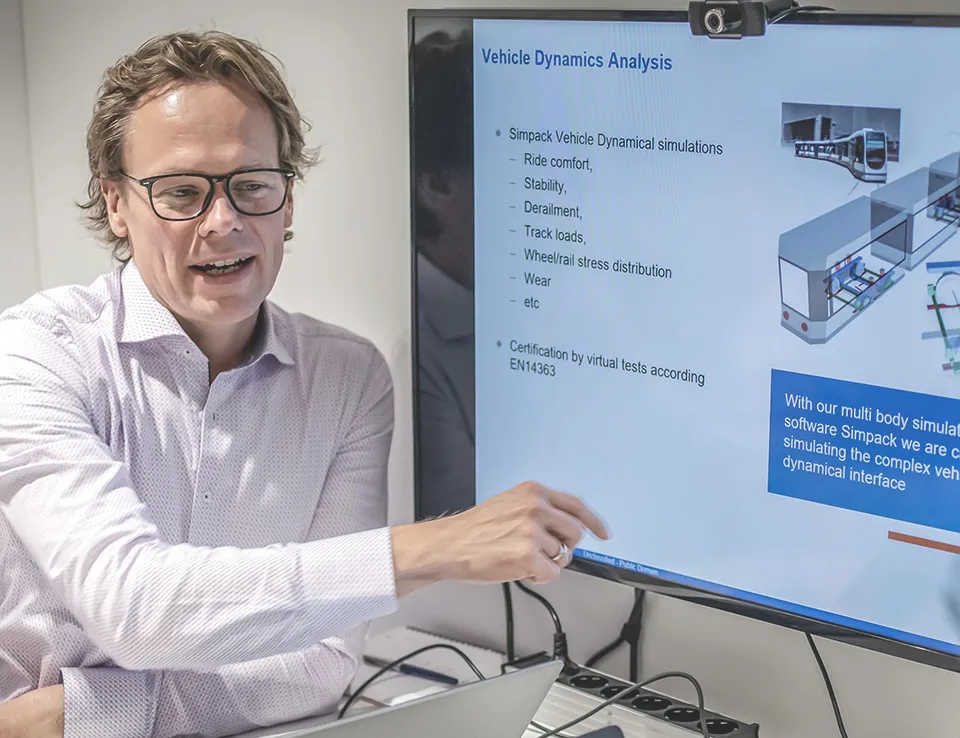
An industry voice
Our experts are leading contributors to the international committees, working groups and professional forums that define the rail industry’s technical standards.
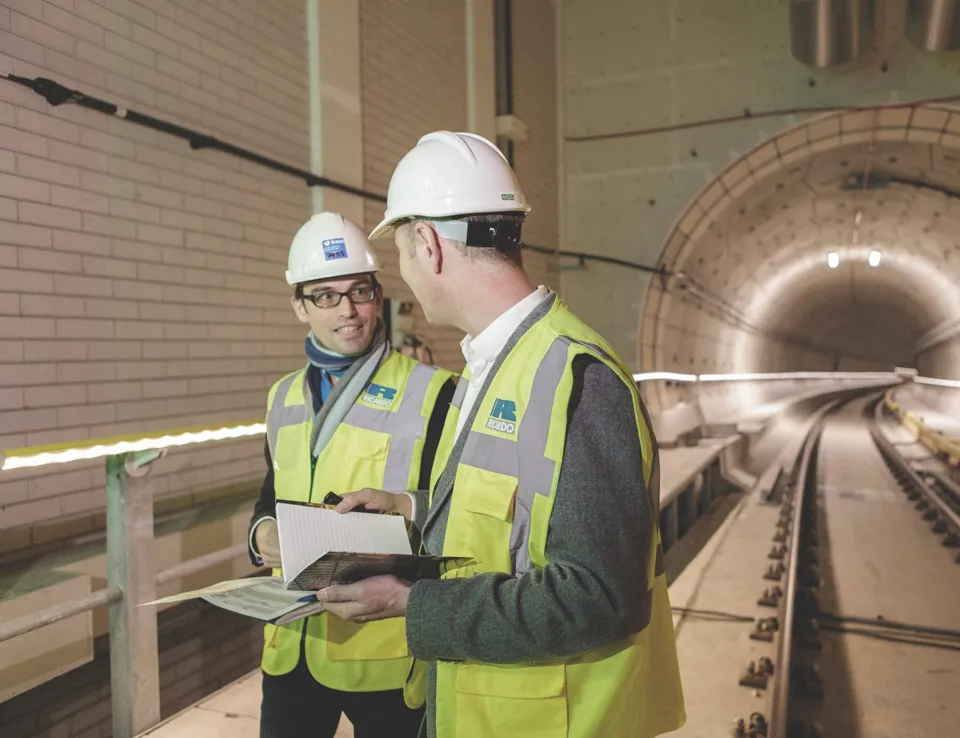
Collaboration
We add value by working alongside your teams in an open and constructive partnership, offering balanced and insightful perspectives on the bigger picture.
PUPIL - Track Geometry Assessments
Vehicle-track interfaces Resources








